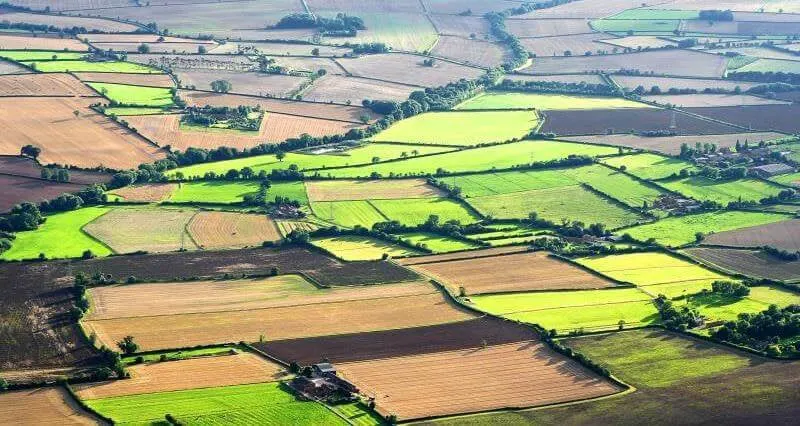Viewpoint: Public investment in farming technology could cut land use by 63 thousand square miles—’about the size of Iowa’
Viewpoint: Public investment in farming technology could cut land use by 63 thousand square miles—’about the size of Iowa’


Using existing research on the relationship between R&D and productivity and SIMPLE, a global economic model of agriculture, we find that doubling agricultural R&D between 2020 and 2030, compared to a business-as-usual scenario, would reduce global agricultural land use by about 63 thousand square miles, about the size of Iowa, and reduce the level of emissions from fertilizer and fuel use per unit of food produced about 12 percentage points. We project these changes would reduce greenhouse gas emissions (GHG) by over 100 million tons — equivalent to ⅙ of current US agriculture emissions — while also reducing global food prices about 8 percentage points more than under business-as-usual.
These benefits of R&D have multiple mechanisms. Research can reduce emissions both from farm inputs like fertilizers as well as from land-use change. Advances in crop breeding, farm equipment, and other agricultural areas have helped farmers grow more food with less fertilizer and land, and thus less land-use conversion and greenhouse gas emissions. Because of such innovations, the carbon intensity of agriculture fell more than 10 percent between 1990 and 2015.
Since the US is a major global food producer, these benefits will spill over. Productivity gains give the US a larger share of global food production by increasing farmers’ international competitiveness. This reduces global environmental impacts since US farming is typically more resource-efficient than farming elsewhere.
Ultimately, our analysis finds that increasing US public agricultural R&D funding would help address climate change, land-use conversion and habitat loss, and food insecurity. In contrast, we show that another proposal that would reduce emissions — preventing expansion of farmland and taxing farm inputs — would also risk increasing food prices and thus food insecurity.
Read the original post

 | Videos | More... |

Video: Nuclear energy will destroy us? Global warming is an existential threat? Chemicals are massacring bees? Donate to the Green Industrial Complex!
 | Bees & Pollinators | More... |

GLP podcast: Science journalism is a mess. Here’s how to fix it

Mosquito massacre: Can we safely tackle malaria with a CRISPR gene drive?

Are we facing an ‘Insect Apocalypse’ caused by ‘intensive, industrial’ farming and agricultural chemicals? The media say yes; Science says ‘no’
 | Infographics | More... |

Infographic: Global regulatory and health research agencies on whether glyphosate causes cancer
 | GMO FAQs | More... |

Why is there controversy over GMO foods but not GMO drugs?

How are GMOs labeled around the world?

How does genetic engineering differ from conventional breeding?
 | GLP Profiles | More... |

Alex Jones: Right-wing conspiracy theorist stokes fear of GMOs, pesticides to sell ‘health supplements’




 Trust issues: What happens when therapists use ChatGPT?
Trust issues: What happens when therapists use ChatGPT? Fighting deforestation with CO2: Biotechnology breakthrough creates sustainable palm oil alternative for cosmetics
Fighting deforestation with CO2: Biotechnology breakthrough creates sustainable palm oil alternative for cosmetics California, Washington, Oregon forge immunization alliance to safeguard vaccine access against federal undermining
California, Washington, Oregon forge immunization alliance to safeguard vaccine access against federal undermining Viewpoint — Fact checking MAHA mythmakers: How wellness influencers and RFK, Jr. undermine American science and health
Viewpoint — Fact checking MAHA mythmakers: How wellness influencers and RFK, Jr. undermine American science and health 30-year-old tomato line shows genetic resistance to devastating virus
30-year-old tomato line shows genetic resistance to devastating virus Viewpoint: Video — Big Solar is gobbling up productive agricultural land and hurting farmers yet providing little energy or sustainabilty gains
Viewpoint: Video — Big Solar is gobbling up productive agricultural land and hurting farmers yet providing little energy or sustainabilty gains The free-range chicken dilemma: Better for birds, but with substantial costs
The free-range chicken dilemma: Better for birds, but with substantial costs ‘You have to treat the brain first’: Rethinking chronic pain with Sanjay Gupta
‘You have to treat the brain first’: Rethinking chronic pain with Sanjay Gupta
